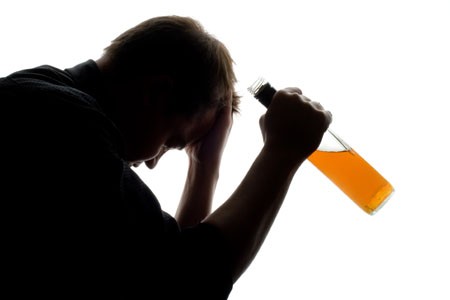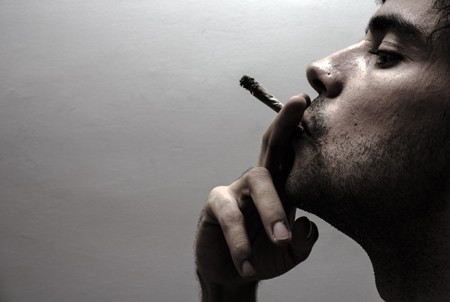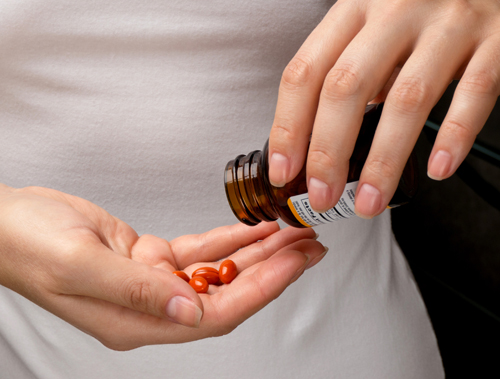Clinical Vignettes from Dr. Elizabeth Stuller
 Dr. Elizabeth Stuller, a staff psychiatrist at the Amen clinics in Washington, DC and CEO of private practice Stuller Resettings in Baltimore, MD, provided this editor (Robert M. Post) with several interesting anecdotal observations based on her wide clinical experience with difficult-to-treat mood disordered patients.
Dr. Elizabeth Stuller, a staff psychiatrist at the Amen clinics in Washington, DC and CEO of private practice Stuller Resettings in Baltimore, MD, provided this editor (Robert M. Post) with several interesting anecdotal observations based on her wide clinical experience with difficult-to-treat mood disordered patients.
- Stuller has used low-dose asenapine (Saphris), e.g. half a pill placed under the tongue, for depressed patients with alcohol use problems who have trouble getting to sleep. She has also used asenapine for rapid calming of agitated patients in her office.
- Stuller has also had success with the use of the atypical antipsychotic drug brexpiprazole (Rexulti) for patients with bipolar depression and low energy. She typically uses 0.5 mg/day for women and 1 mg/day for men. Stuller finds that there is little weight gain or akathisia with brexpiprazole.
- She has had success with the drug Nuedexta, which is a combination of dextromethorphan and quinidine and is approved for the treatment of sudden uncontrollable bouts of laughing or crying, known as pseudobulbar affect, which can occur as a result of neurological conditions or brain injuries. It is a combination of an NMDA antagonist and a sigma receptor agonist. Stuller starts with the 20mg dextromethorphan/10 mg quinidine dose once a day and increases to twice a day in week two. She finds it useful for behavioral effects of traumatic brain injury (TBI), anxiety resulting from the use of synthetic marijuana (sometimes called spice), and psychosis not otherwise specified. Stuller also finds that some patients appear to respond well to Nuedextra but not minocycline, or vice versa.
Editor’s Note: Note that these are preliminary clinical anecdotes conveyed in a personal communication, and have not been studied in clinical trials, thus should not be relied upon in the making of medical decisions. All decisions about treatment are the responsibility of a treating physician.
NAC Reduces Alcohol Cravings, If Not Use
The antioxidant N-acetylcysteine (NAC) has been found to reduce many types of habitual behavior, from gambling to drug use to compulsive hair-pulling. A recent study by researcher Gihyun Yoon and colleagues, which was presented at a 2015 scientific meeting, found that while NAC and placebo reduced days of heavy drinking by about the same rates, NAC significantly reduced alcohol cravings and quality of life compared to placebo among participants with alcohol dependence.
In the 8-week study, 44 participants aged 18–65 received either 3600mg/day of NAC or a placebo. This dose of NAC was higher than the 600mg–2400mg doses that have typically been used in research settings, and there were few side effects, confirming that NAC is a safe treatment.
The authors are not sure how NAC produces this effect, but it may be by regulating the neurotransmitter glutamate.
Marijuana Use Worsens PTSD Symptoms in Veterans
A 2015 study by Samuel T. Wilkinson and colleagues in the Journal of Clinical Psychiatry reports that among war veterans who completed a special treatment program for post-traumatic stress disorder, those who continued or began using marijuana after treatment had more severe PTSD symptoms, were more violent, and used drugs and alcohol more often. Those who stopped using marijuana or never used it had the lowest levels of PTSD symptoms in the study.
Editor’s Note: Scientific information about marijuana is almost never reported in the media. Evidence of the adverse effects of heavy marijuana use are robust and consistent.
Some of these include:
- A doubling of the risk of psychosis compared to non-users. People with a common variation in the enzyme COMT, which metabolizes dopamine, have an even higher rate of psychosis.
- An increased risk of bipolar disorder onset.
- A worse course of bipolar disorder.
- An increased risk of schizophrenia.
- Memory deficits that remain even after marijuana use has ceased.
- Loss of motivation (exactly what someone with depression doesn’t need).
- Anatomical changes in brain structures.
- A worse course of PTSD and increased violence in those with PTSD.
Bottom line: Those who say marijuana is benign may be ill-informed. People with mood disorders, proneness to paranoia, or PTSD should stay away from marijuana.
Connections Between Stress and Substance Use May Be Mediated By Corticotropin-Releasing Factor
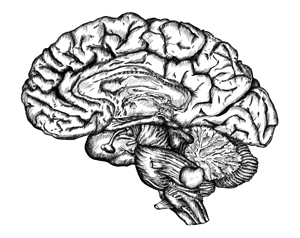 Researchers hope to map out the neurocircuitry by which stress leads to compulsive drug taking. A recent study by Klaus Miczek and colleagues examined different rodents’ responses to the stress of being repeatedly placed in the cage of a larger, more aggressive rodent, developing what is known as defeat stress, a set of behaviors that mimic human depression. Mice and rats showed increases in the stress hormone corticosterone that did not diminish over repeated run-ins with a larger animal. Rodents who were exposed to this stress became sensitized to cocaine or amphetamine, showing hyperactivity that increased each time they accessed the drug (the opposite of a tolerance response). Some also “binged” on cocaine, which they were able to self-administrate by pushing a lever to receive infusions. The mice and rats that went through the social defeat showed elevated levels of dopamine in the nucleus accumbens, the brain’s reward center. Levels were related to the severity of their stressful experience.
Researchers hope to map out the neurocircuitry by which stress leads to compulsive drug taking. A recent study by Klaus Miczek and colleagues examined different rodents’ responses to the stress of being repeatedly placed in the cage of a larger, more aggressive rodent, developing what is known as defeat stress, a set of behaviors that mimic human depression. Mice and rats showed increases in the stress hormone corticosterone that did not diminish over repeated run-ins with a larger animal. Rodents who were exposed to this stress became sensitized to cocaine or amphetamine, showing hyperactivity that increased each time they accessed the drug (the opposite of a tolerance response). Some also “binged” on cocaine, which they were able to self-administrate by pushing a lever to receive infusions. The mice and rats that went through the social defeat showed elevated levels of dopamine in the nucleus accumbens, the brain’s reward center. Levels were related to the severity of their stressful experience.
Later the rodents had a choice between water and a 20% alcohol solution. The researchers determined what type of stress led the rodents to consume the alcohol solution instead of the water. The maximal effect was seen in two types of mice that suffered an attack of less than five minutes that resulted in a moderate number of attack bites (30); this resulted in the mice consuming large amounts (15–30 g/kg/day) of the alcohol solution. Earlier sensitization to cocaine or amphetamine did not predict later alcohol or cocaine self-administration.
When the researchers injected the rodents with antagonists of the receptors for corticotropin-releasing factor, a hormone and neurotransmitter important in stress response, prior to each episode of social defeat, the rodents did not escalate their cocaine or alcohol self-administration, indicating that CRF plays an essential role in the process by which stress makes animals prone to using substances.
In related research by Camilla Karlsson and colleagues, IL-1R1 and TNF-1R, the receptors for two inflammatory cytokines, mediated the effects of social stress on escalated alcohol use in mice.
Opiate and Alcohol Abuse
Deaths from opiate abuse are occurring in the US at about the same rate as automobile fatalities. At a recent talk, researcher Richard Ries discussed treatment of opiate addictions and the current epidemic of unintended opiate overdoses. Most opiates being abused come from other people’s leftover prescriptions. The best way to prevent opiate abuse is to throw out unused painkillers when they are no longer needed.
Many overdoses from opiates also involve alcohol and benzodiazepines, which can contribute to breathing difficulties.
There are several treatments available that can help patients abstain from using opiates. Treatment with opioid receptor antagonists (such as naltrexone (Rivia or long-acting Vivitrol, which is taken as an injection and lasts for 1 month), partial agonists (like buprenorphine), or full agonists (like methadone) results in, on average, an 80% decrease in the rate of hospitalization and an 80% reduction in crime, as well as a marked decrease in AIDS transmission. Without treatment, it is very difficult for people with opiate addictions to maintain abstinence, and relapse rates are extraordinarily high.
Treatment of Alcohol Abuse and Benzodiazepines
Ries also discussed data on treatment of alcohol abuse. He emphasizes that some aspects of withdrawal, such as sleep disturbance, can last a month or more after a parient’s last drink, putting the patient at high risk for relapse. Gabapentin, which is most often prescribed to prevent seizures, helps patients with this phase. Ries endorsed the combination of gabapentin and naltrexone as especially helpful. Carbamazepine is widely used in Europe for the treatment of alcohol abuse, and Ries also strongly endorsed the drug as another way of avoiding benzodiazepines. Several large placebo-controlled trials suggest that the anticonvulsant topiramate is also effective for long-term alcohol avoidance.
Editor’s Note: Another researcher, Mark Frye, found that women with bipolar disorder are more than seven times more likely than women in the general population to abuse alcohol, often in an attempt to self medicate their residual anxiety and depression. Excellent treatment of mood in bipolar disorder may have the double benefit of helping patients avoid alcohol abuse. The nutritional supplement n-acetylcysteine (NAC) also helps improve mood in bipolar disorder and has positive placebo-controlled data in heroin, cocaine, and alcohol avoidance.
Depressive Symptoms Negate Effects of Heart-Healthy Behaviors
Physical activity and light to moderate drinking (as is often associated with the Mediterranean diet) are recommended as ways to reduce risk for heart disease and type 2 diabetes. New research shows that among healthy people, symptoms of depression can counteract the anti-inflammatory benefits of both exercise and light to moderate alcohol consumption.
C-reactive protein (CRP) is a cardiometabolic risk marker. High measures of CRP are a sign of inflammation. Leisure-time physical activity and light to moderate alcohol intake (defined as about half a drink per day for women and one drink per day for men) are associated with lower levels of CRP. Depression is associated with higher levels.
A study by Edward C. Suarez et al. published recently in the journal Brain, Behavior, and Immunity examined 222 nonsmoking men and women aged 18-65 years. These participants were physically healthy and had no history or diagnosis of psychiatric conditions. Participants recorded the amount of alcohol they consumed and the amount of physical activity in which they participated. CRP levels in their fasting blood samples were measured, and they also completed an inventory of depressive symptoms.
Those people who were physically active had lower levels of CRP, but the 4.5% of participants with depressive symptoms did not see any anti-inflammatory benefits from physical activity. Similarly, light to moderate drinking was associated with lower levels of CRP only in men who were not depressed.
Depression did not seem to affect other markers of physical health in this study, such as levels of triglycerides or cholesterol.
Editor’s Note: This study suggests that treating depressive symptoms should be a part of any plan to reduce cardiovascular risk. It seems that depression has effects that go beyond psychological distress and may prevent patients from reaping the benefits of their healthy behaviors. The effect of depression in preventing heart healthy changes in CRP could be one of many factors mediating the high levels of cardiovascular risk in depression. People with depression are twice as likely to have a heart attack than those without depression.
Maternal Smoking and Drinking Linked to ADHD in Kids with Bipolar Illness
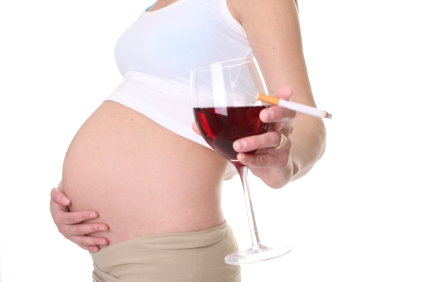
At the 57th Annual Meeting of the American Academy of Child and Adolescent Psychiatry (AACAP) in New York in October 2010, Tim Wilens of Massachusetts General Hospital (MGH) presented data that maternal smoking and alcohol use during pregnancy both appeared to increase the risk of comorbid attention deficit hyperactivity disorder (ADHD) in children with bipolar disorder.

